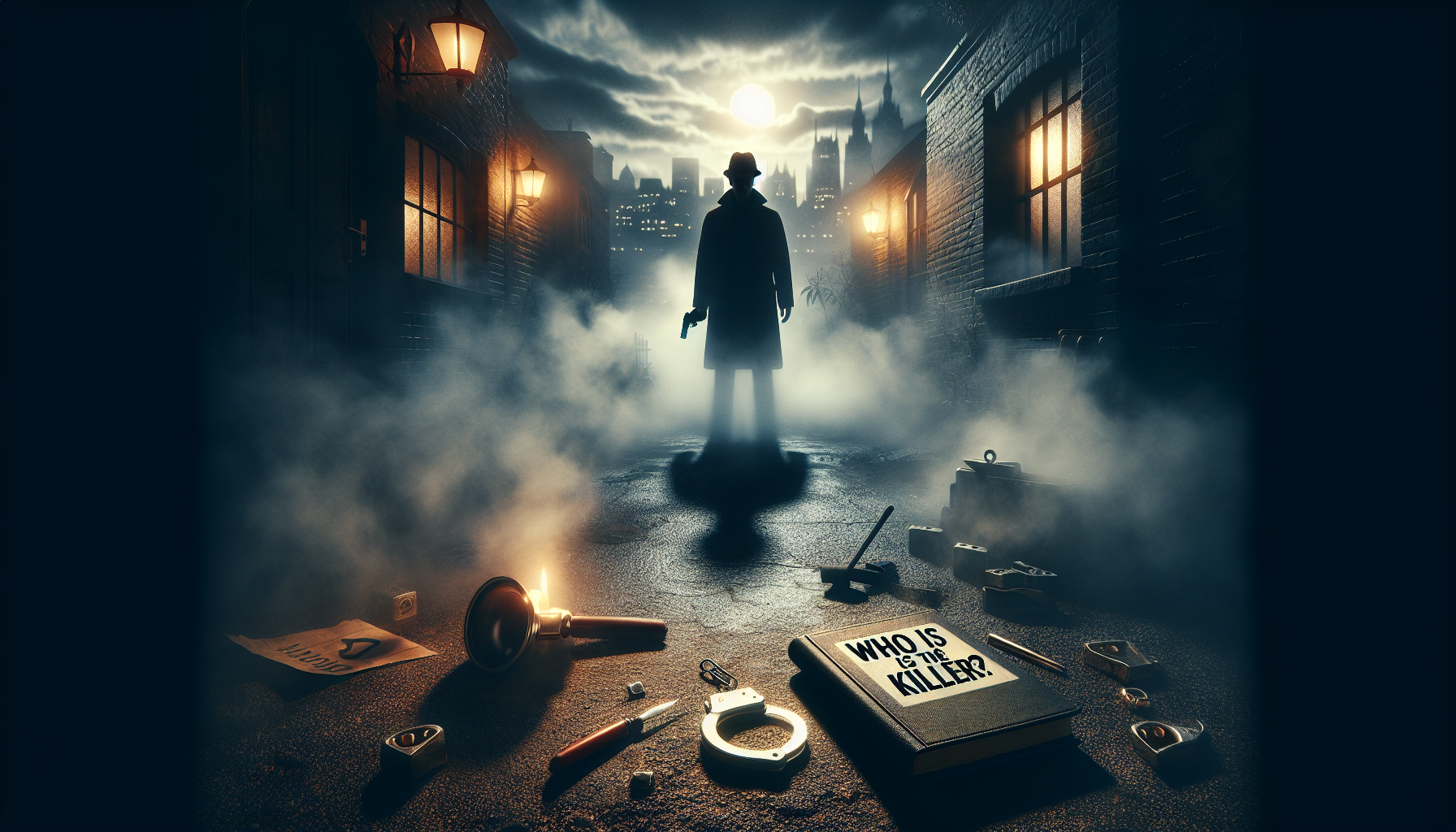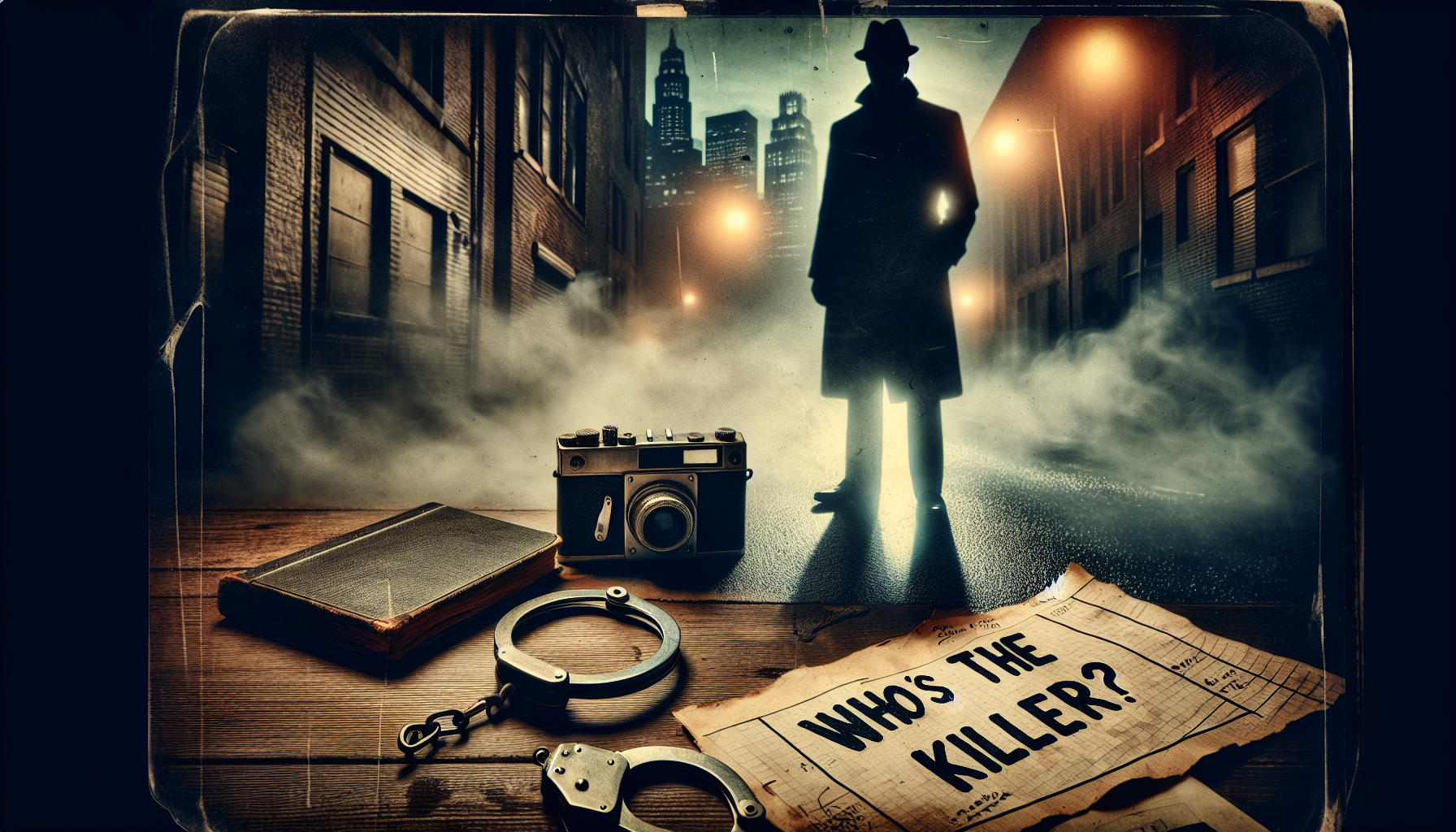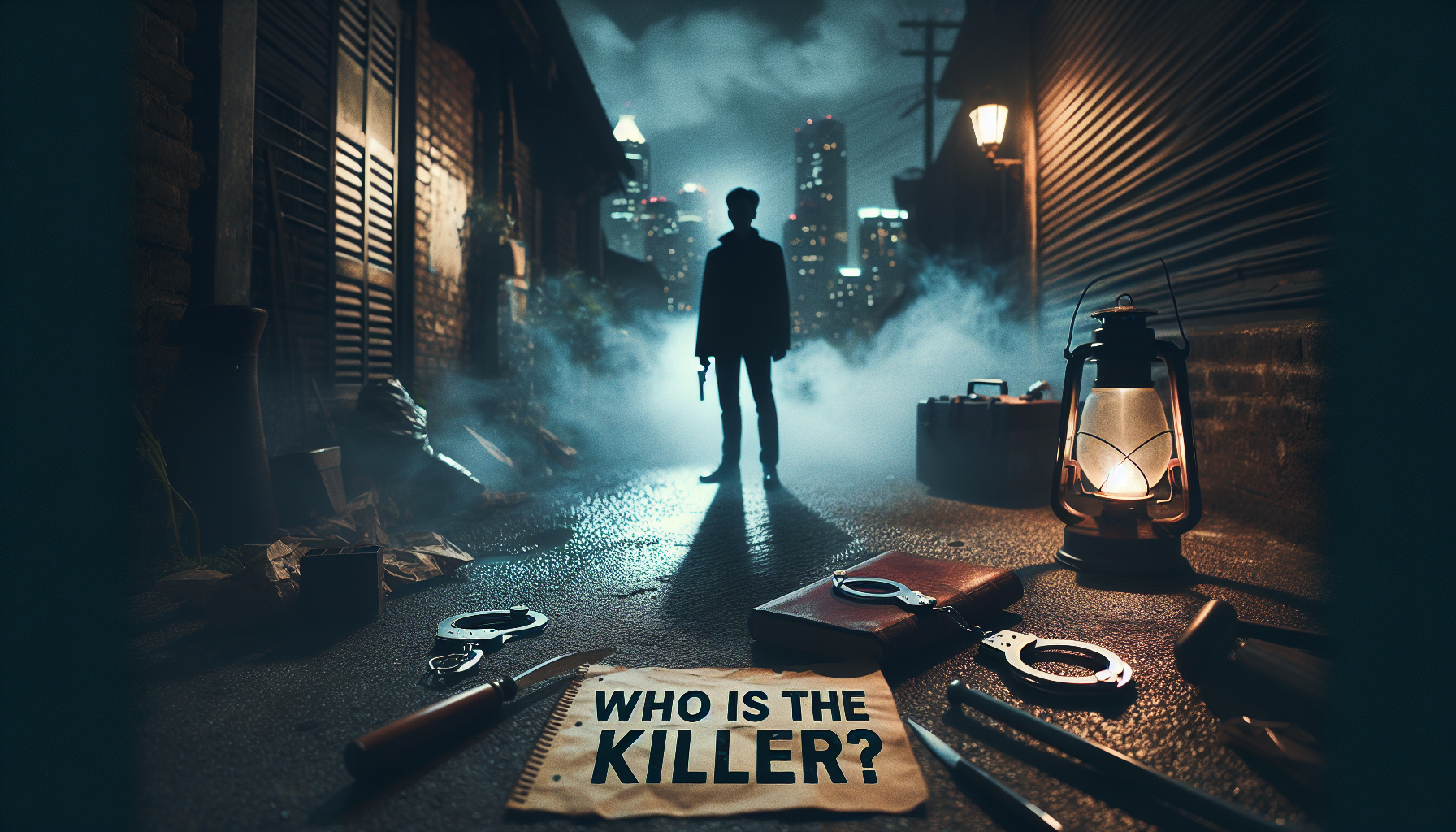|
IN BRIEF
|
As the credits roll on The Little Things, viewers are left in a labyrinth of tension and intrigue, grappling with the haunting question: who truly is the killer? This gripping crime drama, set against the backdrop of a serial killer haunting the streets of 1990s Los Angeles, invites audiences to peel back the layers of suspense surrounding its enigmatic characters. With detectives Deacon and Baxter pursuing the elusive Sparma, the film artfully entwines their doubts and convictions, leading to a chilling ambiguity. Join us as we delve into the complex narratives and character motivations that blur the lines between guilt and innocence, and explore the tantalizing mystery that keeps us on the edge of our seats.

The film The Little Things captivates audiences with its intricate plot and shadowy characters, leaving viewers pondering the true identity of the killer. Set against the backdrop of a crime-ridden Los Angeles during the 1990s, the story follows two detectives, Deacon and Baxter, who become embroiled in the haunting enigma surrounding a string of murders. As the investigation progresses, tensions rise and suspicions deepen, particularly towards Albert Sparma. This article explores the film’s profound ambiguity and the questionable morality of its characters, ultimately inviting audiences to ponder who, if anyone, is the real killer.
The Enigmatic Sparma: A Suspect Shrouded in Mystery
At the core of the narrative is the character of Albert Sparma, played by Jared Leto. He initially appears as a prime suspect in the series of homicides, and both Deacon and Baxter are convinced of his guilt. However, the screenplay leaves a lingering question: Is Sparma truly the killer, or merely an accomplice? As the detectives scrutinize him, it becomes evident that Sparma is far more than a mere suspect; he embodies the complexity of human nature, blurring the lines between innocence and guilt.
The Role of Deacon and Baxter in the Investigation
The tension intensifies as we delve deeper into the psyche of Detectives Deacon and Baxter. Though their pursuit of justice mounts, their perceptions of morality shift. Deacon, portrayed by Denzel Washington, grapples with his past while wearing boots that ignite speculation about his own culpability. This raises the question of whether Deacon harbors hidden truths that distance him from his role as a protector of the law. Alternatively, Baxter, played by Rami Malek, finds himself torn between our protagonist’s influence and the haunting implications of a corrupt justice system.
The Dilemma of Ambiguity: Who Really Is the Killer?
The narrative culminates in a crescendo of uncertainty, where the film’s conclusion tantalizingly hints at the existence of a murderer, yet fails to provide definitive answers. While some theories suggest Deacon himself might be involved in the killings or inadvertently contributing to the cycle of violence, the film cleverly dodges confirmation. The ambiguous nature of the film provokes philosophical inquiries: Can a detective become that which he seeks to apprehend? This moral quandary resonates throughout the film, leaving viewers in a state of contemplation.
Exploring Other Theories and Perspectives
Fan discussions and analyses abound, particularly on platforms like Reddit. Various interpretations emerge, one of which posits that the real killer might have never been introduced—merely a figment of the detectives’ disturbed psyches. Furthermore, the issue of whether Sparma is merely a victim of circumstances or a criminal mastermind evokes a gripping dialogue among dedicated viewers.
The Final Twist: The Question Remains
The essence of The Little Things lies in its ability to entwine viewers in a web of suspense and ethical dilemmas. The conclusion raises compelling questions about accountability, guilt, and morality. As we examine the character arcs and weaving narratives, it is evident that John Lee Hancock, the film’s director, has masterfully orchestrated a story that invites reflection rather than resolution. As audiences question their own intuitions about good and evil, the film leaves us pondering—who really is the killer in this haunting mystery?
Delve deeper into the underlying meaning of the film and its characters by exploring further insights on various platforms, including Screen Rant and Digital Spy. Whether audiences settle on Sparma, Deacon, or a haunting amalgamation of both, the enigma of The Little Things lingers long after the credits roll.
| Aspect | Analysis |
| Suspect 1: Albert Sparma | Initially believed to be the killer due to circumstantial evidence. |
| Suspect 2: Deacon | Hints at being involved; potential psychological parallels with the murderer. |
| Detective Baxter’s Role | Struggles between justice and morality; his actions raise questions of guilt. |
| Ambiguity in Ending | Leaves the audience questioning: is justice served or is an innocent harmed? |
| Symbolic Elements | Boots worn by Deacon symbolize a connection to the killer’s mindset. |
| Time Period Context | The ’90s L.A. setting emphasizes the tension and moral decay of the era. |

The film “The Little Things” dives deep into the murky waters of moral ambiguity and the psychological toll of investigation. As viewers accompany detectives Deacon and Baxter through a labyrinth of clues and deception, the identity of the killer remains clouded in uncertainty. Was it Sparma, the unsettling figure played by Jared Leto, or could it have been someone much closer to the investigation? This analysis seeks to unravel the film’s intricate mystery, exploring the nature of guilt, obsession, and the unresolved tension that permeates the narrative.
The Plot Overview
Set against the backdrop of a gritty 1990s Los Angeles, “The Little Things” introduces an unsettling atmosphere where bodies are mysteriously turning up, and a nameless killer lurks. The film centers on two detectives, Deacon (Denzel Washington) and Baxter (Rami Malek), who embark on a journey that exposes their vulnerabilities and haunted pasts. The movie captures the haunting toll of pursuing justice amidst swirling doubts and moral conflicts.
The Investigation
As Deacon and Baxter delve into their investigation, they ultimately fixate on Albert Sparma, whose sinister charm and eccentric demeanor make him a prime suspect. The evidence appears to pile up against him, yet the film continually blurs the lines; viewers are left questioning whether Sparma is merely an “innocent creep” entangled in the detectives’ obsessive quest for the truth. Adding another layer of complexity is the fact that the movie refrains from confirming Sparma’s role as the real killer, leaving audiences in a state of anxiety and speculation.
The Role of Deacon and Baxter
Throughout the film, the characters of Deacon and Baxter struggle with their own demons. Deacon’s empathizing with the killer by donning the boots hints at a chilling connection. Could he, instead, represent the darker part of the pursuit of justice? The duality of his character raises questions about the psychological impacts of unresolved cases and lingering guilt. Is it possible that the actual killer is not Sparma but a manifestation of their internal battles?
The Ambiguity of the Ending
As the story culminates, the audience is left with a critical tension—Baxter’s decision to confront Sparma leads to a violent culmination without clear resolution. Did Baxter kill an innocent man, or was he ridding the world of a cold-blooded killer? This cliffhanger aspect of the narrative serves as a powerful reminder of the imperfections of the criminal justice system, and how the pursuit of “the little things” can result in catastrophic choices.
Final Thoughts
The mystery of “Who is the killer in the little things?” serves as a stark reflection of our complexities as humans. With its layered characters and unresolved threads, the film invites contemplation long after the credits roll. For those eager to explore more about the film’s intricacies and the captivating performances of its leading actors, check out the insightful analysis available at Collider or delve deeper into the movie’s themes at MovieWeb. Additionally, for release date news, visit Netflix Tudum for exclusive updates on this ambiguous tale.
- Serial Killer – The elusive figure responsible for a string of murders in Los Angeles.
- Albert Sparma – The primary suspect portrayed by Jared Leto, whose guilt remains ambiguous.
- Detectives – Deacon and Baxter, portrayed by Denzel Washington and Rami Malek, respectively, are determined to solve the case.
- Ambiguity – The film intentionally leaves viewers questioning the true identity of the killer.
- Empathy & Obsession – Deacon’s fixation on the case leads him to adopt the murderer’s perspective.
- Psychological Tension – A recurring theme as the detectives grapple with their own demons.
- Ending Interpretation – The resolution leaves open questions about justice and morality.
- Moral Dilemma – The film explores the consequences of taking the law into one’s own hands.
- Character Motivations – Each character’s backstory adds layers to the unfolding mystery.
- Cinematic Decisions – Directorial choices enhance the film’s suspense and intrigue.

The question of who is the killer in The Little Things lingers painfully at the heart of the film, leaving audiences grappling with a web of ambiguity and moral complexity. Taking place in the grim backdrop of 1990s Los Angeles, the movie unfolds through the eyes of two detectives, Deacon and Baxter, as they embark on a harrowing journey to catch a serial killer. However, as the investigation deepens, so does the enigma surrounding the true identity of the murderer. This analysis explores the film’s intricate mystery and the implications of its unresolved questions.
The Investigation Journey
As viewers, we follow along with detectives Deacon (Denzel Washington) and Baxter (Rami Malek), who quickly become convinced that local suspect Albert Sparma (Jared Leto) is their man. Their pursuit leads them into a troubling psychological maze, marked by flashes of disturbing, unresolved violence. The film invites us to contemplate the nature of justice and the toll that obsessive investigations take on the human psyche.
The Nature of Belief and Conviction
The interactions between the two detectives highlight the theme of conviction in the face of uncertainty. Baxter, idealistic and driven, is certain of Sparma’s guilt, while Deacon, haunted by his past, remains skeptical. This dichotomy raises questions about what constitutes true evidence and the thin line between guilt and innocence. As we witness the duo’s interactions, the film cleverly illustrates how personal biases can cloud judgment, ultimately leading them down a dark path.
Sparma: The Mysterious Accomplice
While much of the narrative seems to point at Sparma as the potential killer, the film refrains from delivering a concrete answer. Instead, we are led to believe that Sparma, though not the direct murderer, acts as an accomplice, guiding viewers to the unsettling notion that the real killer may remain uncaptured. The ambiguity surrounding Sparma’s character evokes a haunting reflection on the nature of evil and complicity.
The Brief Encounter
A brief sighting of the murderer adds to the intrigue, as Denzel Washington’s character witnesses a fleeting moment that suggests there is more to the story than initially perceived. This tantalizing glimpse raises further questions—was the killer in fact a mere reflection of what the detectives feared, or were they seeing shadows of their own tormented psyches? The notion of seeing oneself in the killer suggests a deeper psychological connection, challenging the audience to confront what lies beneath the surface.
The Final Confrontation and Doubt
The climax sees Baxter taking matters into his own hands, and as he confronts Sparma, the suspense builds. The ultimate act of violence—whether against an innocent man or a cold-blooded killer—invites viewers to grapple with their own morality. The film leans into this tension of vigilantism versus justice, reflecting a world where certainty is fleeting and the lines between right and wrong are blurred.
The Search for Closure
As the credits roll, the lingering query of “Who is the killer?” retains a grip on the audience. This unresolved climax serves as a stark reminder of reality’s complexities. The journey through the narrative reflects a deep-seated human desire for closure, while simultaneously contemplating the disturbing possibility that true evil may exist far beyond our grasp.
In conclusion, The Little Things crafts an unforgettable portrayal of a chilling investigation defined by moral ambiguities. The film’s ending leaves echoes of doubt and contemplation, ensuring that the question of the killer’s identity haunts our thoughts long after the screen fades to black.
FAQ on “Who is the killer in The Little Things?”
Q: Who do Deacon and Baxter believe is the killer? They strongly suspect Albert Sparma to be the obvious perpetrator throughout their investigation.
Q: Is Jared Leto’s character really the killer in the film? While many clues point towards him, the film never definitively confirms Sparma as the killer.
Q: What role does Denzel Washington’s character play in the film? He portrays Joe Deacon, a detective deeply involved in the hunt for the serial killer.
Q: Does the movie provide a clear resolution regarding the killer’s identity? The ending leaves viewers with ambiguity, allowing them to ponder whether Sparma was guilty or simply an unfortunate red herring.
Q: Who actually ends up committing murder in the climax? The revelation of the true murderer is obscured, leaving much to the audience’s interpretation.
Q: What era does the film take place in? The story is set in the 1990s, against the backdrop of an unsettling serial killer case in Los Angeles.
Q: Does the film hint at Deacon being the killer? Although some theories suggest that Deacon might have committed murder, it’s primarily seen as an exercise in empathy for the killer.
Q: What is the significance of the film’s ending? It implies that the truth may remain elusive, emphasizing the complexities surrounding crime and morality.
Q: Are there any true stories that might have influenced the film? The film draws inspiration from various real-life serial killer cases, enhancing its psychological tension.
Q: How does the film explore character motivations? The narrative delves into the characters’ psyches, revealing their fears, obsessions, and the toll that unresolved mysteries take on them.

